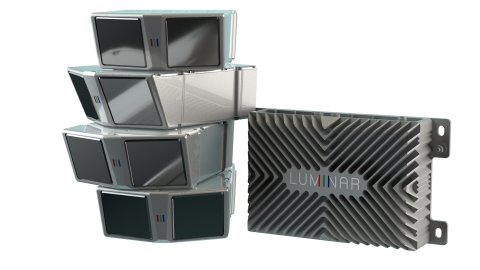CES 2020 officially kicked out on yesterday in Las Vegas with more than four thousands companies all over the world presenting their novel applications and technologies. Automotive applications covering autonomous driving technologies are one major field targeted by worldwide technology builders.
After SONY demonstrated the conceptual electronic vehicle Vision S at its press conference, several LiDAR companies also revealed their new LiDAR sensors at CES with a wide range of applications.

(Image: Velodyne)
Velodyne Lidar introduced Velabit™, the company’s smallest sensor which brings new levels of versatility and affordability to 3D LiDAR perception, at CES 2020. The Velabit leverages Velodyne’s innovative LiDAR technology and manufacturing partnerships for cost optimization and high-volume production. The compact Velabit can be embedded almost anywhere within vehicles, robots, unmanned aerial vehicles (UAVs), infrastructure and more. It is designed to be easy to manufacture at mass production levels to optimize Advanced Driver Assistance Systems (ADAS) and autonomous vehicles.

(Image: Ouster)
Ouster revealed two new digital LiDAR sensors, one, OS0-128, features ultra-wide field of view and the other, OS2-128, addresses the long-range detection. . The OS0 marks a new category of ultra-wide field-of-view lidar optimized for autonomous vehicle and robotics applications. Built in partnership with leading OEMs and robotics companies, the OS0 enables a new level of high-resolution depth imaging that integrates into robotics platforms and autonomous vehicles. The OS0-128 was designed for the rigors of commercial deployment and has already secured multiple design wins from leading robotaxi and autonomous trucking OEM customers.
Combining Intvo’s smart software with AEye’s 2D/3D adaptive sensing iDAR™ platform, the two companies are demonstrating advanced pedestrian intent capabilities at CES 2020 that captures, processes and optimizes both 2D and 3D data in real-time, to achieve human-like perception that aims to improve safety for all road users.

(Image: Luminar)
Meanwhile, Luminar introduced its LiDAR perception technology that enables safe driver-out-of-the-loop autonomy. This is achieved via deep integration of LiDAR sensing, software and compute, enabling the industry to transition from isolated component testing to successful commercialization for Level 3 and 4 autonomous applications beginning on highways. At CES, Luminar demonstrated the technology’s capabilities in real-time of detecting and classifying objects out to 250M. Paired with Luminars sensors, its new Perception Compute Unit (PCU) reference design is powered by the NVIDIA Xavier SoC, which is already being embedded into production vehicles. This end-to-end solution will have the effect of substantially shortening and solidifying industry timelines, enabling autonomy to be commercialized in production in 2022.














